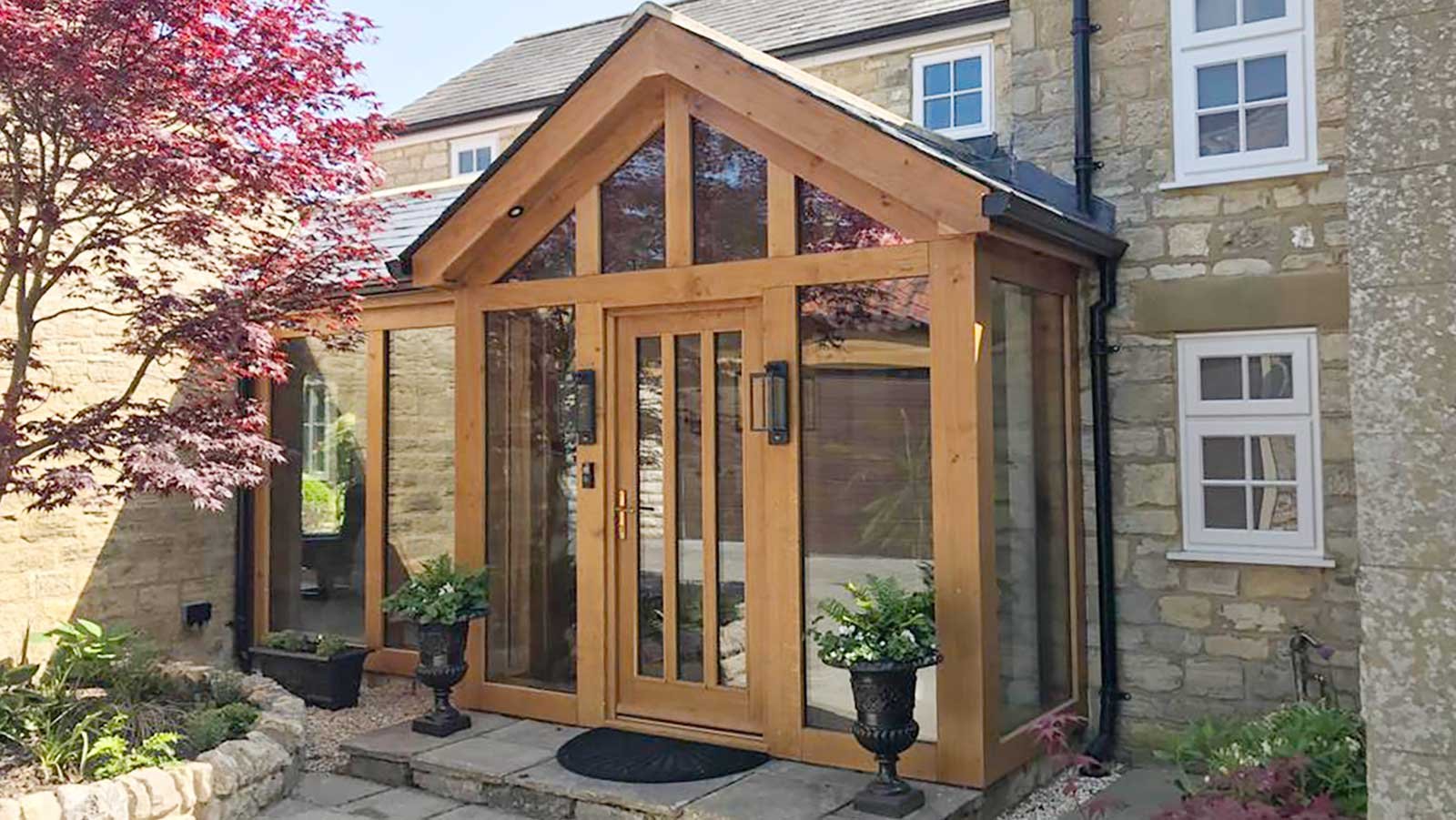
oakbydesign
01423 593 794


Howerd, from Stott Thompson Architects based in Boston Spa, recommended Jamie, from Oak By Design to their clients Vanessa and Robert Earl.
Vanessa and Robert had recently bought their period home in the picturesque town of Boston Spa. Keen to welcome family and friends to their new home they wanted to create a separate guest suite.
Their home benefitted from a separate stone building which had been used by the previous owners for storage etc. They wanted to use this building for the guest suite, but for it to be connected to the main house.
The plans provided by Howerd Scott Thompson linked the 2 buildings by an oak framed extension.
Jamie visited the couple at their home to discuss their plans for their new home.
Their priority was to re site the house’ main staircase. Their present one had been altered over the years and wasn’t practical. They also planned to update their kitchen and needed an oak window and oak door with side lights, leading out to the garden.
They wanted to get the main house finished before embarking on the building renovation and the link extension.
Once quotations had been received and accepted, and whilst Planning Permission was being approved for the renovation, the Oak By Design team started on the first stage.
In Spring the kitchen was refurbished and the Oak By Design team installed a new oak pattern 10 (glazed) door with full height glazed side lights. This brought more light into the kitchen, as did a super oak window looking out onto the garden.
To complete the kitchen, engineered oak flooring was installed. The couple chose the Kolonial range (brushed finish) in Natural White.
They also installed oak flooring in the dining room. They chose the Kolonial range for this room but in a more traditional colour – Gothic, and in a herringbone pattern.
3 large full -length oak framed glazed units were installed int the dining room to create picture views from the room.
During this time the team removed the couples existing softwood staircase. They replaced this with a new oak staircase. 2 large double bullnosed steps create a grand feature, complete with oak newels, spindles and handrail. The landing benefits from a long banister looking down into the hallway. The couple chose to carpet the stairs.
As part of the internal house renovations, chunky oak frames were installed in the connecting feature stone walls between existing rooms.
Once Planning Permission was granted the second phase began!
Jamie met with the architect, builder and clients to finalise all the details of the forthcoming build. Once confirmed the oak framed extension timbers were put into production ready for installation once the builders had finished their groundworks.
The Oak By Design team installed the framework towards the end of the year, and completed the roof for the extension.
The oak framed extension consisted of 2 glazed oak frames, one at each end of the extension, to tie the existing house in with the stone annexe. The first has glazing to 2 sides and a glazed truss and looks out onto the couples’ garden. The second one consists of a lovely glazed door with 3 full length slender glazed units. A glazed truss and glazed units to 2 sides create a perfect welcome to the home.
The Oak By Design team completed their work by installing the flooring to the extension. For this part of the house they chose the Kolonial (brushed finish) boards in a herring bone pattern. The colour choice was Gothic.
The whole renovation was completed in March.
Double glazing, also known as a double glazed sealed unit or DGU, is a popular choice for windows due to its thermal insulation properties. The DGU consists of two sheets of glass that are separated by a spacer bar, creating an air gap. This gap is then filled with an insulating gas, similar to a sandwich of glass bread with an air filling.
One key benefit of double glazing is its ability to retain heat within a room and prevent cold air from entering from the outside. This results in increased energy efficiency and reduced heating costs. By acting as a barrier between the interior and exterior environments, double glazing helps maintain a comfortable temperature inside while minimising the reliance on artificial heating systems.
However, some may argue that installing double glazing can be costly and may not provide substantial savings in the long run. It is true that double glazing typically comes at a higher initial cost compared to single-pane windows. However, when considering the long-term benefits it offers in terms of energy savings and improved comfort, the investment becomes more financially viable.
Research has shown that homes with double glazing experience significantly less heat loss than those with single-pane windows. This translates into lower energy consumption for heating purposes and ultimately reduces utility bills over time. Additionally, the enhanced thermal insulation provided by double glazing contributes to noise reduction, making it particularly beneficial for properties located in noisy areas such as near busy roads or airports.
In conclusion, despite initial cost considerations, double glazing proves to be an effective solution for improving thermal insulation in buildings. Its ability to retain heat and reduce energy consumption makes it an attractive option for homeowners seeking increased comfort and reduced utility expenses over time.
The utilisation of timber in construction is a time-honoured tradition, with oak being a popular choice due to its durability and aesthetic appeal. However, there are distinct differences between green oak and air-dried oak that warrant careful consideration when selecting the appropriate material for building projects.
Green oak is derived from recently felled trees, retaining a substantial moisture content ranging from 60-80%. As this timber undergoes seasoning, which refers to the gradual drying out process, its moisture content diminishes. The visual imagery of water gradually evaporating from the wood aptly depicts this transformation.
In contrast to green oak, air-dried oak is cut into desired sizes and exposed to natural elements for an extended period. This exposure allows for air circulation between the timbers, facilitating the reduction in moisture content over time. The pace at which air-dried oak dries out is captured by the evocative phrase "25mm per year," highlighting the slow but steady progress of drying.
Air-dried oak possesses lower moisture content compared to green oak due to its lengthy seasoning period, typically ranging from three to ten years depending on thickness. This reduced moisture content enhances stability and minimises movements or shrinkage associated with timber use in construction projects.
Understanding the distinctions between green oak and air-dried oak grants building experts invaluable knowledge when making material selections. By considering factors such as moisture content and stability, professionals can ensure optimal outcomes in their construction endeavours without compromising quality or longevity.
Telephone: 01423 593 794
Locksley Park
Blind Lane
Tockwith
YORK YO26 7QJ
Opening Times:
Mon to Fri - 9.00am to 5.00pm
Bank Holidays - Closed
Christmas 2025- TBC
Oak By Design is the trading name of:
Oak By Design Ltd.
Reg Number: 04384416
VAT Number: 664 8012 33